No one likes to write a cover letter. But statistics show that these objects of jobseeking angst are still very important to securing an interview. According to recent research, 83% of hiring managers rate cover letters as important in hiring decisions across industries. In fact, 45% of hiring managers surveyed read the cover letter first, illustrating that it often serves as a first introduction.
Statistics also reveal that cover letters are especially important if there are any issues with your work history. Perhaps you are underqualified, have an employment gap, or are transitioning careers, for example. In fact, 49% of hiring managers said a good letter can convince them to schedule an interview with an otherwise “weak” candidate.
Unfortunately, there is not a lot of time to capture the attention of a hiring manager. Research indicates that about half of hiring managers spend between 30 seconds and 2 minutes reading a cover letter, and only 15% spend more than 2 minutes. This means that your cover letter needs to quickly convey the most important information and encourage them to spend more time considering you for an interview.
So, to help you create effective cover letters that stand out and quickly capture the attention of hiring managers without eating up all your time, below are 10 easy cover letter tweaks. We’ve also included real life cover letter examples to help you create your own cover letter templates that you can tweak to customize for each position quickly and easily.
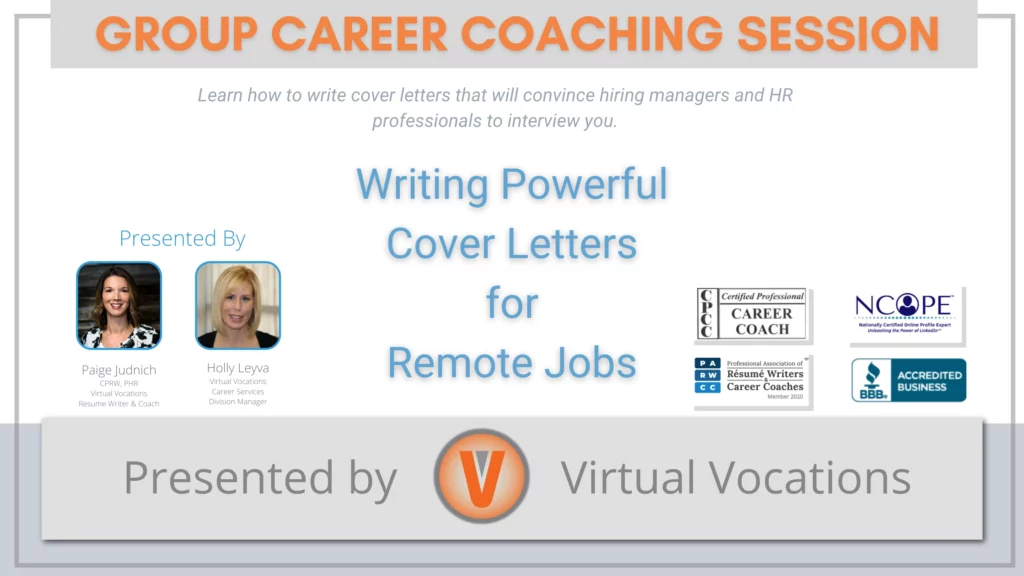
1. Make It Pleasing to the Eye
Have you ever looked at a page of text and gotten tired just looking at it? You want to invite the eye to read the document. Try implementing the following cover letter tweaks:
- Make sure that the format is simple, neat, and consistent overall
- Don’t overcrowd the page and include plenty of white space
- Show that your resume and cover letter go together by duplicating the headers
2. Clearly Present Contact and Job Application Information
Frequently, human resources departments and recruiting firms are hiring for many positions at one time. You want the reader to immediately know who the letter is from, how to contact you, and the job for which you are applying. Include the following:
- File name. Contact information begins with the file name now that we almost always deal with digital letters. Include your name and a job identifier.
- Header. Since this is copied from your resume, this should already include your name, email, phone number, LinkedIn URL, and city-level location.
- Letter Addressee. Try and be as specific as possible. Do a little research to try and get the hiring manager, department, location information. Don’t use “To Whom It May Concern.”
- Job Information. You can include a re: line in your letter to specify the job you are applying for and/or include this information in your first paragraph.
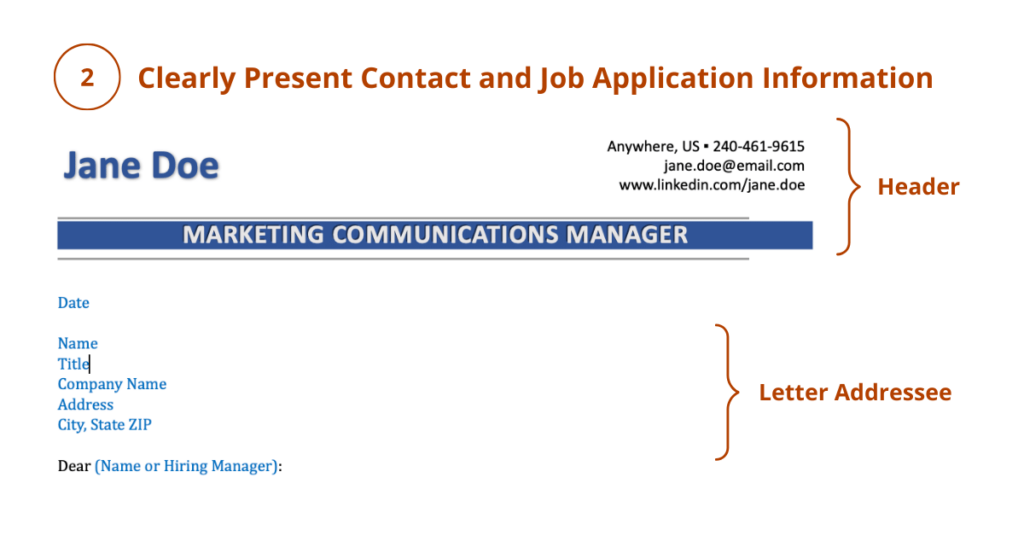
3. Put the Most Important Information at the Beginning
Cover letter opening lines are arguably the most important in the entire letter. The first paragraph needs to include the most important information so you can quickly catch the interest or alleviate the concerns of the reader. Try making the following cover letter tweaks:
- The role you are looking for. This conveys your motivation in applying for the position.
- The position being advertised. Even if you include a re: line, it’s a good idea to show this letter is customized to a specific position at their company.
- Your top qualification. Briefly state why you are the best candidate, for example, you have a unique qualification or years of experience.
- Special considerations. You can also use any outstanding or unique considerations you want the hiring manager to take into account. For example, you admire the company or feel an affinity with their mission.
- Address any red flags. Briefly explain anything that may concern or raise questions with a hiring manager. This can include employment gaps, not enough experience, career transition, and so on. It’s best to get it out of the way right away.
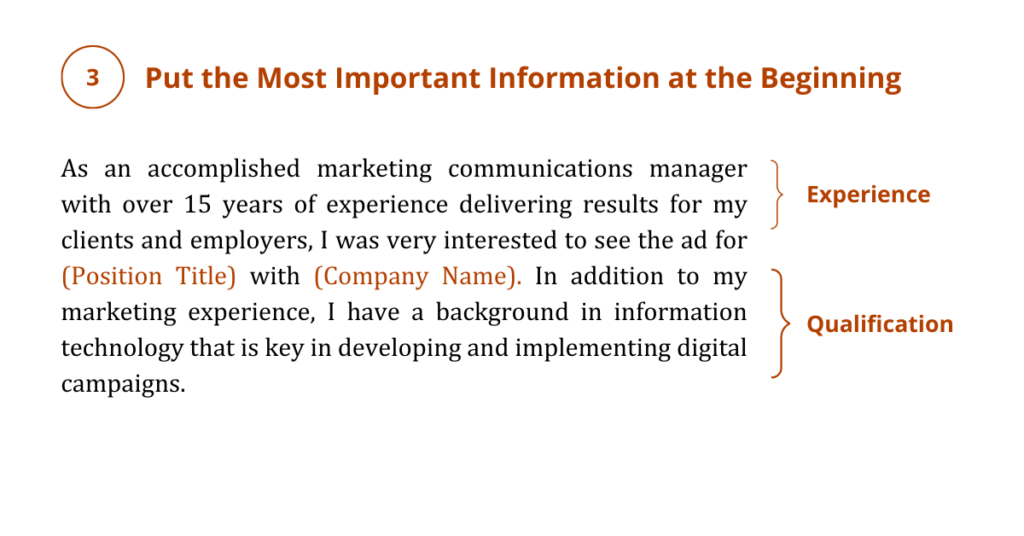
4. Summarize Experience Most Relevant to the Role
Next, spend a few sentences summarizing your most relevant experiences. You can provide an overview of your career or focus on your most recent position. You can even draw from experiences that you didn’t have space for in your resume but that are particularly relevant in this instance.
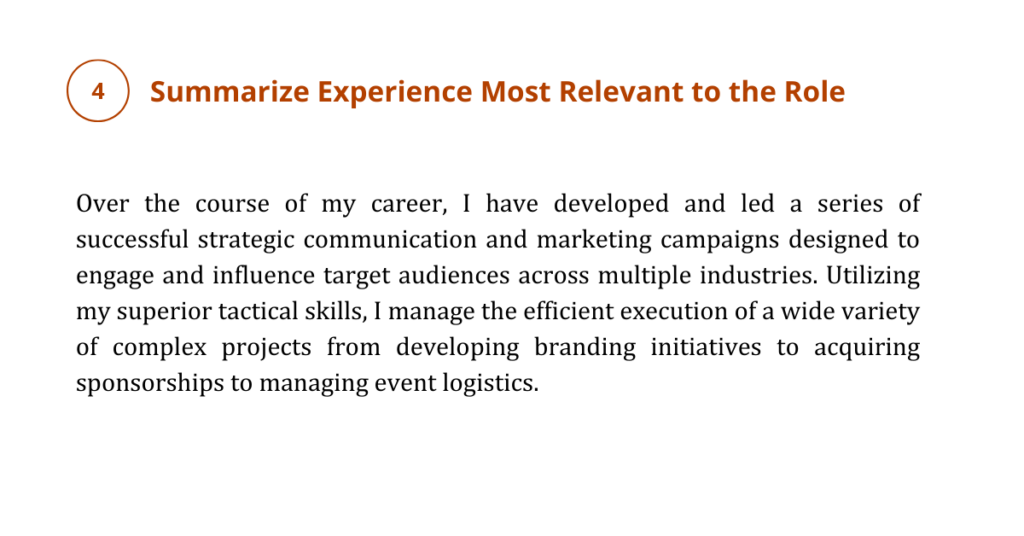
5. Provide Evidence That You Meet the Top Job Requirements
Follow up your summary with three or four bullet points that address specific requirements of the position and how your experience meets that requirement. You can use the job ad to pinpoint areas to focus on. The most important job responsibilities are usually listed first, so you can start there. Another approach is to pick out the job duties that you are most qualified for or have the most experience in.
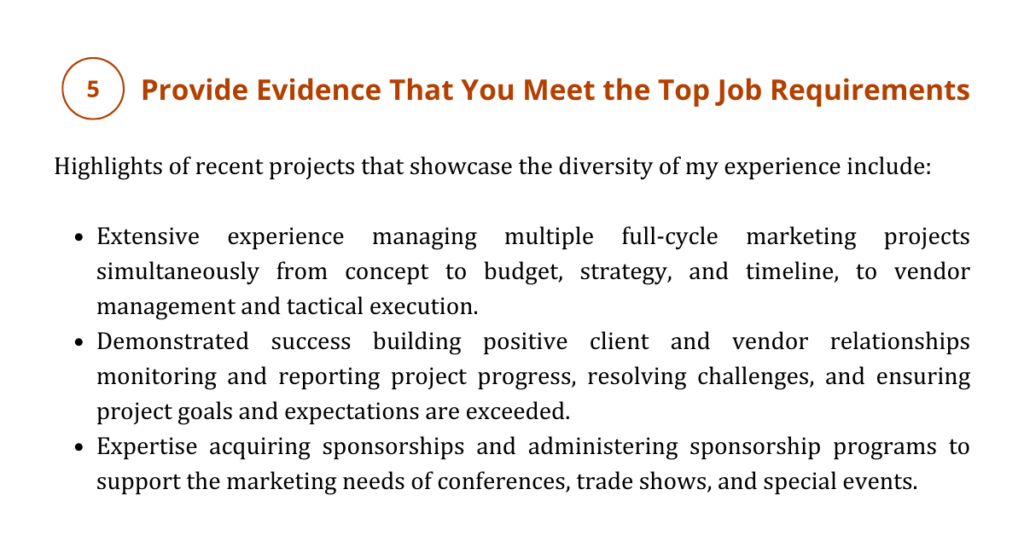
6. Keyword Optimize
Yes, cover letters need to be keyword optimized too. Your cover letter is a great place to add important keywords that are specific to the position. Use the job ad to identify important and repeated keywords and try to incorporate them in your cover letter tweaks. However, don’t overuse any one keyword or try and include them in awkward places. Some ATS systems can identify these strategies, and they definitely don’t make for easy reading.
7. Keep It Short
Your cover letter should never be more than one page. Try and limit it to three short paragraphs and three bullet points. Remember to leave white space.
8. Brainstorm with AI
AI tools like ChatGPT have become all the rage to relieve us of tedious tasks like writing and research. However, these tools have limitations. Definitely useful for identifying keywords in a job ad. Not so good at “writing a cover letter.” Great at offering suggestions for rewording a tricky sentence but not so good at identifying your accomplishments. Also, one important purpose of cover letters is to give the reader a little indication of your personality. So it’s best to think of AI as a brainstorming tool instead of a brain replacement.
9. End With a Call to Action
End your cover letter with a brief summary of why you are the best candidate for the position and then suggest the next step – an interview. There are a variety of phrases that work here, so try and design one that you feel comfortable with and that reflects your personality.
10. Proofread, proofread, proofread!
Lastly, but definitely not least importantly, make sure to read your letter over carefully for any errors. Using spelling and grammar checkers are very useful, but they can’t replace the human eye. When you get cross-eyed looking at it, give it to a friend or family member and get them to look at it too. Nothing tanks your chances at an interview quicker than jagged formatting or a misused word.
According to the research, a good cover letter is as important as it ever was. Taking the time to develop a solid template and making cover letter tweaks to customize and target the document for each position can significantly improve your chances of getting an interview. If you need further guidance, check out the articles below or contact the Virtual Vocations Career Services for professional writing assistance.
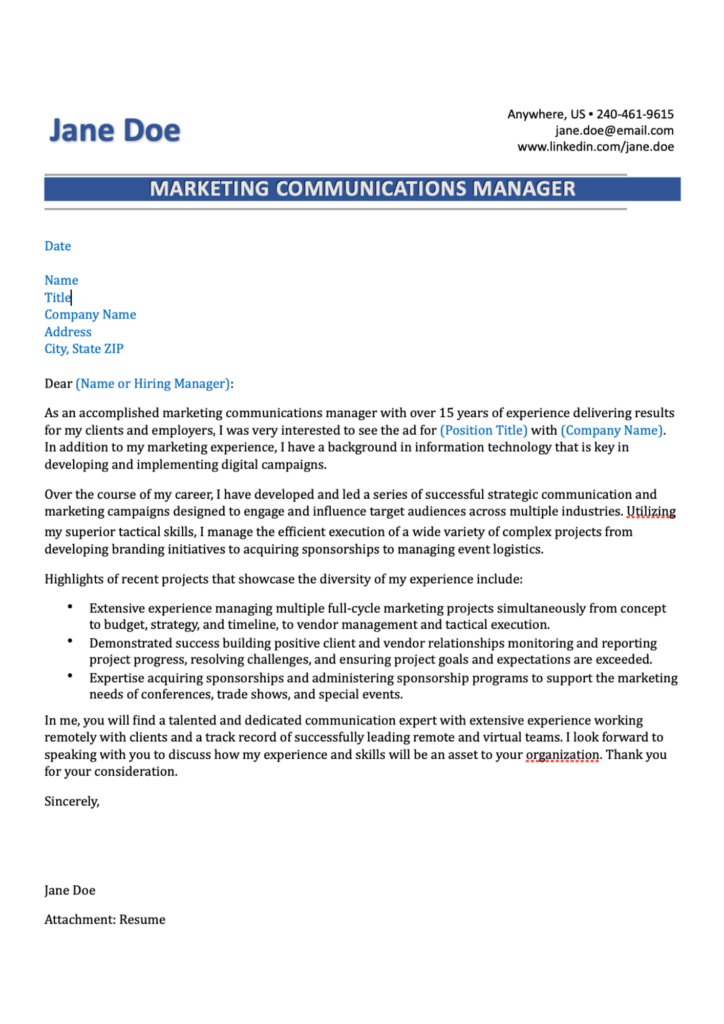
What is the key to a great cover letter? Connect with Virtual Vocations on Facebook, Twitter, LinkedIn, Instagram, and YouTube to share your thoughts and tips. We’d love to hear from you!

Join Virtual Vocations
Joining Virtual Vocations grants you access to our hand-picked remote jobs database. Learn how our service works, browse job leads by location and career category, or search hundreds of hand-screened remote jobs to find legitimate work-at-home job leads that match your skills and background. Register for free or contact us for more information on our service guarantee.
Check out our menu of Career Services provided by our team of certified professionals, including resume and career coaching services for remote jobseekers. Resume assessments and writing, LinkedIn profile enhancement, and cover letter writing are available to maximize the success of your remote job applications. Discounts on all services available to subscription members, become one now.







